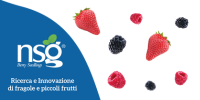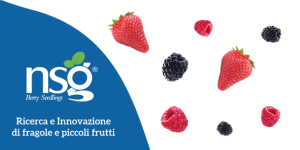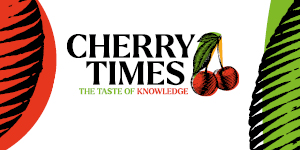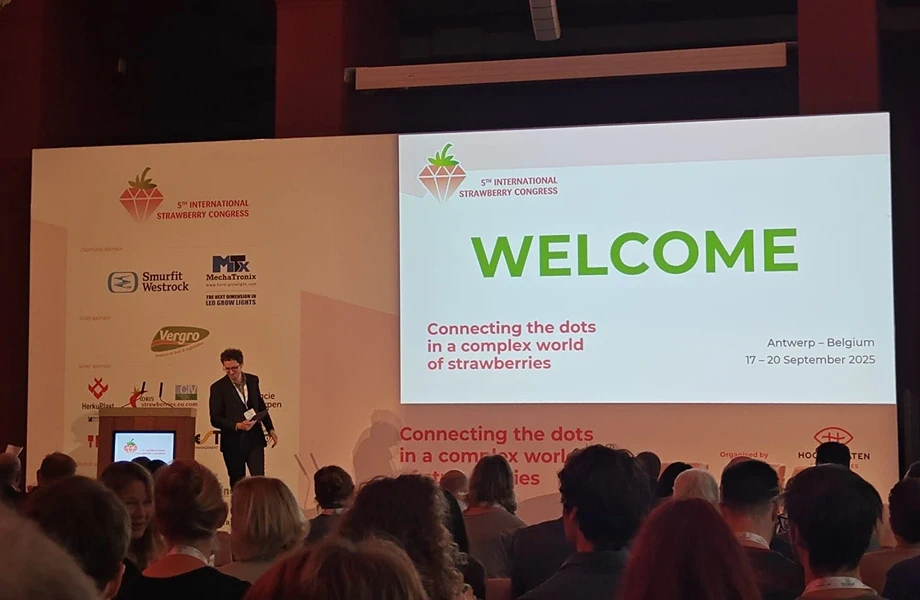From September 17 to 19, 2025, Antwerp once again hosted the international strawberry community for the 5th International Strawberry Congress, an event that over the years has become a key meeting point for the sector, bringing together researchers, breeders, growers, technicians, and industry players.
The theme of this edition – “Connecting the dots in a complex world of strawberries” – served as the common thread across three intensive days, where science, markets, and innovation intertwined in a constant dialogue, rich in content and inspiration for the future.
An industry under pressure
The congress opened with a reflection on the challenges facing strawberry production worldwide: increasingly unpredictable climate change, water scarcity, the spread of new diseases, difficulties in finding skilled labor, and evolving consumers who are more attentive, informed, and demanding. The overall sentiment was that traditional practices alone are no longer sufficient, nor is innovation pursued as an end in itself. What is needed is an intelligent synthesis of proven experience and emerging technologies.
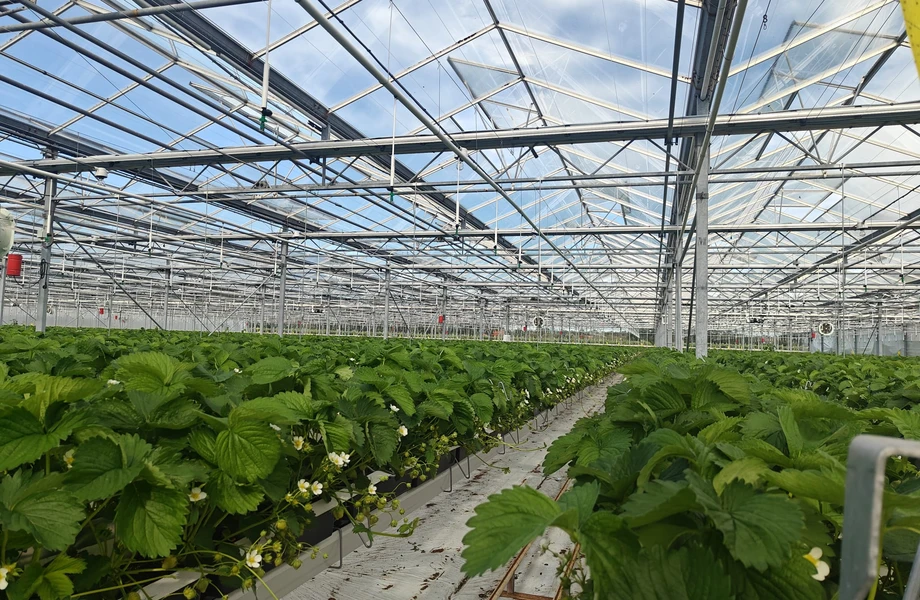
Artificial Intelligence as a tool
Artificial Intelligence was at the heart of the plenary sessions. A pragmatic vision emerged: AI should not be seen as a threat, but as a tool to improve farm efficiency, support breeding programs, anticipate the appearance of pathogens, and interpret market trends with greater precision.
While the futuristic sessions stimulated curiosity, their number seemed excessive and, in some cases, not well aligned with the specific needs of the strawberry sector. Nevertheless, the real challenge lies not in the technology itself, but in the ability to generate and manage data that is reliable and well structured, and translate it into timely operational decisions.
Voices from around the world: key contributions
One of the strengths of the congress was the wealth of international perspectives, offering a broad and comparative view of global dynamics.
China – Huan Zhang outlined a rapidly expanding market driven by young, urban consumers seeking high-quality, environmentally sustainable products. China also stands out for experimenting with new digital distribution models and agri-food e-commerce.
Morocco – Nabil Belmkaddem highlighted the country’s growing role as an export platform to Europe, supported by investments in logistics and cold storage, which extend the supply calendar and strengthen competitiveness in terms of quality and price.
United States – Steven Knapp (UC Davis) shared insights from California, focusing on the evolution of breeding: developing new resilient cultivars against water stress and diseases, supported by cutting-edge digital and genetic tools.
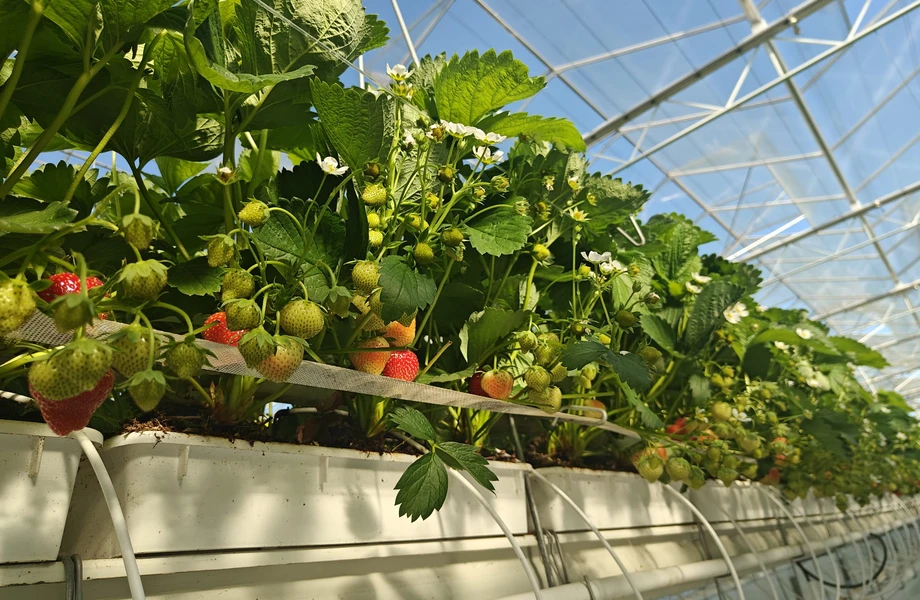
Mediterranean Area – Prof. Manganaris presented research on priming under stress conditions, showing how certain treatments can strengthen plant physiology, enhancing resilience to heat and water stress.
Australia – Scott Mattner (VSICA Research Center) presented results on microwave technology for soil disinfection, an innovative and sustainable method that could become a viable alternative to chemical fumigation.
Italy – Brian Farneti (Edmund Mach Foundation) introduced a pioneering post-harvest approach using differentiated light spectra to extend shelf life and preserve organoleptic quality. A technology capable of reducing waste along the distribution chain.
Netherlands – Prof. Leo Marcelis (Wageningen University) spoke about Vertical Farming applied to strawberries, stressing the potential of this model to guarantee year-round production, consistent quality standards, and efficient resource use.
Belgium – Stef Laurijsen (Proefcentrum Hoogstraten) addressed the issue of energy saving in glasshouses, proposing strategies such as heat recovery and dynamic screening, solutions increasingly necessary in the context of rising energy costs.
Norway – Arne Stensvand presented on “Non-chemical means to control strawberry powdery mildew”, exploring alternative approaches ranging from improved cultural practices to non-chemical strategies, crucial today to reduce fungicide use and increase sustainability.
Italy at the forefront
Italy also played a prominent role, with a diverse and highly qualified delegation confirming the country’s importance in the international strawberry sector. Participants included CIV – Consorzio Italiano Vivaisti, the Polytechnic University of Marche, the Edmund Mach Foundation, INFIA Packaging, COVIRO, and independent professionals such as BetterBerries.
This representation highlighted the strength of Italy not only in research and plant propagation, but also in technology, packaging, and technical consultancy.

Organization and atmosphere
While the quality of the content was high, the decision to schedule parallel sessions raised some concerns.
Forcing participants to choose between equally relevant topics is never easy, and in this case the choice seemed even more questionable given that the second day ended at 1 p.m.—there would have been time to spread sessions into the afternoon and avoid overlaps.
On the social side, the gala dinner was among the most memorable moments: held in the city’s historic museum, it combined conviviality and culture, with a guided tour of the collections accompanied by a violinist. An elegant and memorable setting that reinforced the sense of community.
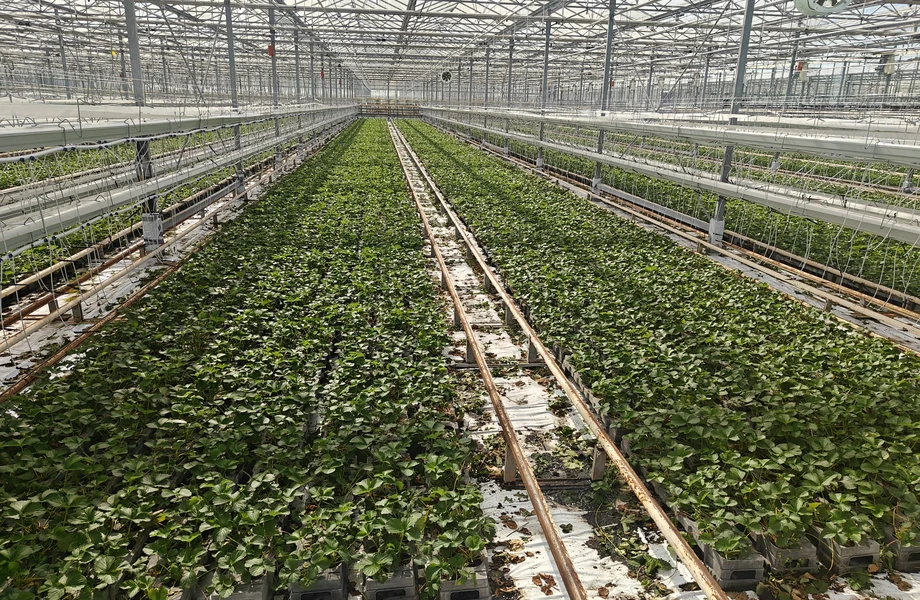
The program concluded with a field visit to two farms of the Coöperatie Hoogstraten, one in Belgium and one in the Netherlands near Breda. In Belgium, participants observed UV machines for controlling mildew and pathogens, along with propagation techniques and varietal management, focusing on cultivars such as Elsanta, Karima, and Florice.
The tour also included visits to suppliers of plastic films for agriculture and to greenhouse component producers, particularly misting systems for cooling and increasing humidity. Such tools are becoming essential even in Northern Europe, where climate change and rising temperatures demand new mitigation strategies.
Marco R. Butera
Global Berry Specialist



